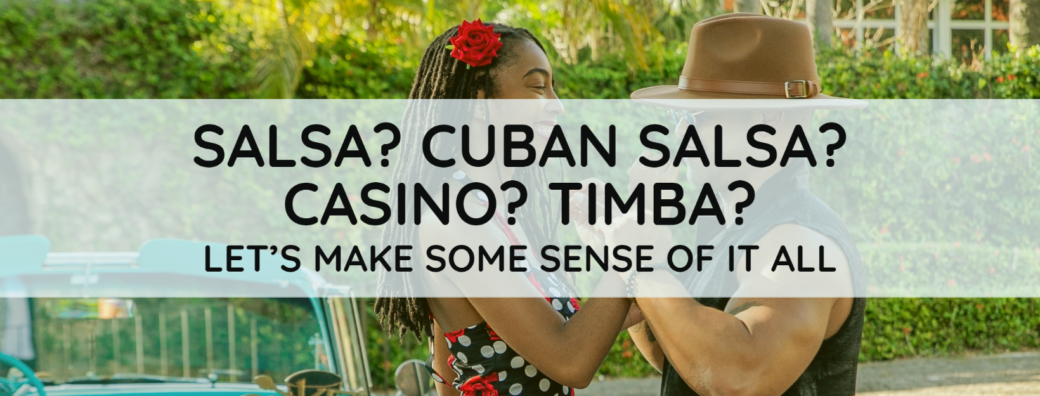At some point this question troubles every person that starts to take his venture into Cuban dances more seriously. The topic is controversial and the article will be opinionated though a rather accurate (😉) description of the state of the Cuban dance scene at the moment of writing.
We will go through the different terms & evolutions one by one and try to make some sense of what is often not explained very well (online at least). In order to do justice to any explanation of these terms some history lessons are in order, but I’ll do my best to keep it short and sweet. It’s also important to note that some of the confusion is often caused because some of these terms are referring to Music, some to dance, and some to both, and even this depends on the era.
The topic is controversial because it deals with a few topics that tend to cause division. Cultural appropriation is one of the biggest issues, but also different philosophical approaches to the evolution of art are important culprits. As I said, this article is rather opinionated, so I will also attach articles with opposed opinions throughout this article to keep what I consider to be a moderate opinion balanced with conservative views. That way you could decide for yourself.
Ready? Let’s go!
Salsa
Salsa music – Back then
In a nutshell, Salsa started as a marketing term that had an undisputed phenomenal international success. Salsa is a term coined by a famous and monumental Fania All Stars band and their Fania Records label. Introducing the entire Cuban repertoire was confusing for Americans, and it’s no wonder, the music was exciting but foreign and the styles were numerous. You had Son, Mambo, Cha Cha, Bolero, and that’s just scratching the surface. While there were more than a few bands playing Cuban, or Caribbean music they didn’t receive the recognition they deserved.
In order to appeal to the crowds, Fania labeled one term to bind them all – Salsa. Salsa is a mix of ingredients, and much like the sauce, Salsa was a mix of many styles, predominately Cuban but also including many influences from Puerto Rico, Dominican Republic, and Jazz and Swing from the United States. This rebrand wasn’t immediately well received. There are more than a few famous quotes by Salsa giants. Celia Cruz said “Salsa is Cuban music with another name. It’s mambo, chachachá, rumba, son … all the Cuban rhythms under one name.”. Machito said: There’s nothing new about salsa, it is just the same old music that was played in Cuba for over fifty years.”. Tito Puente claimed: “The only salsa I know is sold in a bottle called ketchup. I play Cuban music.”. Yet, the “Salsa unification” was a huge success nationally in the US and internationally later on. Eventually, all those giants of musicians embraced the term and until today the Salsa term reigns supreme in Latin music.
Salsa music – Nowadays
It’s worth mentioning, that even though Salsa started as a marketing trick and a crude simplification, looking back one can consider it a new movement of music – a different development branch for Cuban and Caribbean Music. In my opinion, the bands that are playing Salsa in the United States became less innovative with the structures of Latin Music, and instead bring a lot of innovation through Jazz, Swing, and Pop music (Mark Anthony as an example). Take it or leave it, today this movement brought us with new sub-genres with different flavors – but we call it all Salsa, the new and old – all Salsa.
Correspondingly, the original dances evolved into new flavors, ones that fit the new music and the local taste: Salsa LA or Salsa New York Style are the most prominent examples. Although there is much to expand on the topic, the main focus of this article is to differentiate terms that are relevant to dancers dancing Cuban dances, so I’ll cut this one short.
From Cuban music & dance perspective though, the “Salsa” term is a simplification of the beautiful complexity of the music and dance culture Cuba has to offer. Neither the music nor the dance was ever called Salsa back in the days. There are numerous genres of music and numerous corresponding dances. Regardless, the exposure of Cuban music & dance to the world was under the guise of Salsa and the name stuck hard. It stuck so hard that as a dance teacher or musician, if you want to appeal to the masses there is no point in marketing your classes as Casino, Timba, or whatnot. If you want the crowds to understand what they are going for “Salsa” must be mentioned.
To sum it up and put it simply: Salsa is a catchphrase that nowadays unifies many types of music that stems from Cuban origin. And correspondingly it’s a term that unifies a group of dances that don’t necessarily have too much in common but are all danced to Salsa Music. Those that do know more about it and wish to rise above this crude generalization often prefer to be more precise about the exact type of music they listen to, or the exact type of dance they dance.
If you are curious about this phase of Salsa, there are numerous interviews with Fania All-Stars band members or with other artists mentioned above. This article can be a great entry point as well.
Casino
Casino is a type of dance that is danced to Salsa music (Timba more precisely, but more on that later). It is not a music style of its own. Casino took over the predecessor dance, Son, around the early ’50s in Cuba. While Son was an elegant and measured partner dance, Casino was influenced much by other dances such as Cha Cha and Mambo and added its own energetic flavor.
Fast forward, Casino is a dance characterized by being a strictly circular dance and focuses heavily on figures and knots – the more complicated the better. In the European scene, up until the first decade of the 2000’s you could say that most dancers aspired to dance like the Cubans – and that meant Casino. Unfortunately educational material for Casino was not easily accessible, we are talking about times the internet was still developing, and the options were going to Cuba or getting a hold of a cassette. Many ended up following an adaptation of Casino called Salsa Miami Style, but that aside, we all strived to dance Casino. If you are curious about the topic, this article talks about one of the worst techniques that stuck from Miami Salsa in the western world.
In my opinion, Casino is a “dying dance”. As time goes by it becomes more of a historical dance. It’s just not how most people aspire to dance today. So when someone says he or she teaches Casino it often denotes an aspiration to dance like the old days – circular movement, forward movement, figures, knots, and typical Casino styling. But it’s not as simple as I make it because people have different understanding and knowledge of the term. It’s worth saying that Casino is still the large base of what is today called Cuban Salsa or Timba. So, it’s for a good reason some prefer to hold on to this term. In a way, that’s a way to respect the origin of the dance and call it how the locals used to call it when they brought it to life. Others call it Casino for the same reason but are unaware that their dance has evolved into something slightly different.
It’s worth mentioning that there is a sub-scene that calls itself Casineros. They all follow the teaching of Yoel Marrero and his “Metodo Del Cuadro Del Casino” or MCC in short. They sometimes claim that they dance the “real” Casino, and Marrero itself often claims publicly that any other version of Salsa or Casino is an act of infringement against Cuba’s intellectual rights. Make no mistake, while Yoel Marrero has some interesting concepts to learn and explore, his method is one of many perceptions of how Casino was and is danced. There is plenty of evidence to support a wider versatility of the dance that existed in the past and today. Suffice to say, when some people say Casino they refer to the style taught by Yoel Marrero but this is a small sect rather than the majority of dancers.
Cuban Salsa
Cuban Salsa is also a term used to denote a style of a dance, a flavor, and evolution of Casino if you will. Although sometimes people denote Cuban Salsa as musical genera, it is not a music genre in Cuba. Those that know little, or those that are tired of going against the stream might call either the dance or the music Cuban Salsa to differentiate it from the nowadays just as popular American-produced Salsa dance and music. But there is more to it I believe.
I find myself often conflicted as I know much of the base in the dance I teach is Casino, and I find it a bit of an appropriation to name it by the United States invented catchphrase “Salsa”. That said, I am not strictly teaching how to dance like in the old days, and the majority of teachers incorporate the same newer influences. It makes me feel at ease calling what I dance and teach Cuban Salsa as it allows me to dance without constraints and expectations to fit into the old image of Casino. Of course, some would disagree and say that Casino is Casino whether it’s evolved or not and opt not to make this separation.
It’s not easy to make any strict definition of what Cuban Salsa is – for me, Cuban Salsa denotes an evolution and relaxation of the strict character of Casino. For example, the circular nature of the dance is no longer adhered to strictly – Nowadays dancers tend to break from the circle occasionally. Miami Salsa assimilated into the dance, and many of its elements & technique became part of Cuban Salsa. In the later first decade of the 2000s or early 2010’s a shift toward simpler figures started, and a higher focus on styling and incorporating different dance styles into the dance (Afro Cuban dances, typical “Bailes Populares” moves, Reggaeton, Contemporary dance, etc…). There are many ways to dance Cuban Salsa, but the world of Cuban salsa is VAST. It’s no longer the one dance it used to be, it is the entire multitude of Cuban culture in a dance with a sprinkle of new additions outside traditional Cuban dances.
As I see it, Cuban Salsa saved Casino from certain doom. American Salsa styles became more extravagant and stylish, Bachata became sexy and verbose, Zouk and Kizomba started to bring the talk about connection, and if Casino stayed as is, it just wouldn’t keep up. The story of each local scene can be different, but for a while there wherever Casino didn’t evolve into Cuban Salsa there used to be a trend for dancers to seek the “next level” in other dances: Salsa LA/NY, or nowadays Bachata and Kizomba. But Cuban Salsa brought something fresh and interesting and when dancers meet the right teacher they often fall in love with the dance.
For a stricter view against “Cuban Salsa” and pro “Casino”, you can refer to this article.
Timba
Timba is predominately a music style, the same one that people often call Cuban Salsa. Timba is a unique genre and a fusion of the multitude of Cuban music (Afro Cuban music, Mambo, Son, Cha Cha, Reggaeton etc..). Some claim Casino was first danced on Cuban Son, heck some people consider Timba to be just a flavor of Cuban Son. Those that look for that Cuban flavor in their “Salsa” need to look for Timba. If you are dancing Cuban Salsa or Casino it’s most likely that you do it to Timba music. Although there is also Son, Changui, and a few other styles that are similar enough for people not to notice.
Timba is never still, Cuban bands constantly revolutionizing the style, as well as drawing innovations from other styles of music like RnB, Jazz, Swing, etc… Timba has some strong similarities between bands, but every band has its own flavor. Differences in the flavor of Timba in a matter of a decade are quite noticeable, even within the same band’s discography. So yeah, it’s changing at a rapid pace.
Rather recently, let’s say mid to late 2010’s different dance artists started to denote their dance as Timba. I find it slightly redundant and synonymous with Cuban Salsa cause they could be one and the same as far as the dance is concerned. But you could say that It is the most contemporary way of dancing Cuban Salsa. So when you dance Timba you dance Casino in the very very relaxed sense. It also means that your main focus is less about complex figures and more about keeping up with how Timba evolved musically. So the typical Timba dancer needs to understand the complexity of the music and dances that correspond to it. A Timbero needs to have an understanding of Afro influences on the music, the traditional dances, and the newer fusions such as Reggaeton, Despelote, and all the rest. Point is a Timbero plays with music more than ever before.
If you are interested to read further on the opinion that Timba is not a dance – this is an interesting article.
“New Style” and other beasts
Moving on to the late 2010s and 2020s, artists invent various names of dance styles that confuse many dancers. Salsa New style is one example that is quite known mostly used by Yoandy Villaurrutia (aka Yoyo Flow). But Yoandy is not the only one, and many artists have their own “trademark” for their dance style.
As things stand now, and maybe in the future it’ll be different, I don’t really see a big enough reason to give these names much thought. In essence, they are all Timba or Salsa Cubana. Artists nowadays are quite innovative and either want to make a name for their unique style or don’t want to be bound by the conventions of old dances. They dance the way they want, whether it’s about incorporating Hip-Hop, Contemporary dance, or whatnot, and we love them for bringing something new and fresh. But while their natural flavor and style are visible, in essence, it’s all just Timba with a pinch of personal flair.
For an opposing view, this article speaks against the evolutions introduced by contemporary dancers.
To Sum it up
Salsa is a crude unification – a catchy trademark that is useful for marketing but hides the complexity, diversity & history that lies beneath, both for music and dance. Casino is a type of dance that was popular back in the days, but now remains the base of the evolution that can be denoted Cuban Salsa, or Timba based on fine details and preference. Timba (not Salsa) is also the main music genre we dance to when we dance Casino, Cuban Salsa, or Timba.
But before we call it a day, I’ll finish this article with a piece of advice. While it’s important to understand the lines that separate one thing from another it’s also important to not mind it too much. Sometimes understanding these fine details gives people the comfort to divide things into boxes, loving some of them, criticizing some, and completely avoiding others. Music & dance are meant to be enjoyed, and the scene is beautiful when we enjoy things together rather than obsessing about division lines such as Cuban Salsa, LA/NY Salsa, Casino, etc… One of the sentences I remember from Cuba the most is “I like your style”. If you enjoy or you bring something beautiful to the world when you are dancing Cuban Salsa, your partner dances NY style, and you are dancing on Afro Jazz music using elements from Hip Hop and contemporary dance, that’s awesome.

La Candela’s Director. Dancer and a certified teacher for Cuban dances since 2008. Ido specialize in Cuban Dances including Salsa, Rumba, Son, and Folklore. He studied under many Cuban dancers, and went through longer trainings in Cuba.

